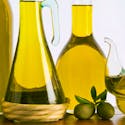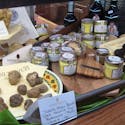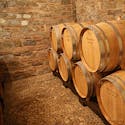The journey of an olive from the farm to the table
An optimal climate, fertile land and skilled hands make Tuscan extra virgin olive oil (EVOO) one of the most popular food product in and outside of Italy.
I have some experience with the production of olive oil since my family has a small olive grove in the hills surrounding Florence.
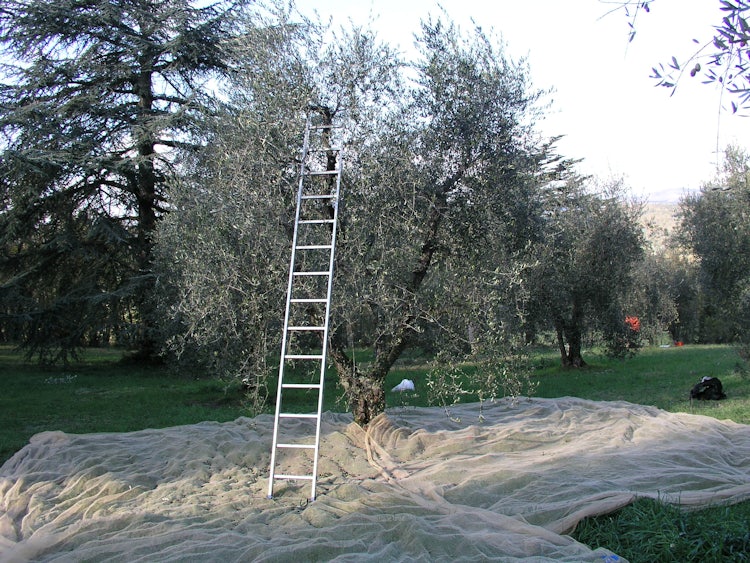
Want to purchase Tuscan EVOO online?
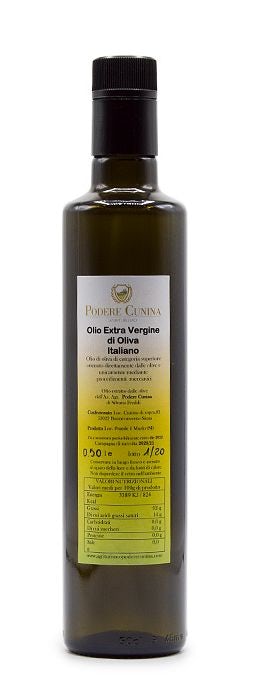
We've tasted and appreciated the flavorful yet delicate taste of the extra-virgin olive oil produced by Podere Cunina in southern Tuscany. You can read more about their oil (and honey and saffron) in our article here. You can then contact them directly to order your EVOO anywhere in the world, as they ship worldwide.
Having the chance to follow the journey of your own olives from the farm to the mill and the table is very exciting.
First of all, I think it is important to know that not all extra virgin olive oils from Italy taste the same nor have the same characteristics. EVO oil can be significantly different from region to region and sometimes even within the same territory.
The climate where the olives grow and the ripeness of the olives at harvest time, the variety of the trees, and the different methods of processing and crushing of the crop are all elements that characterize and influence the final result of each batch of olive oil.
Among the olive tree varieties in Tuscany you'll find mainly the Frantoio, Leccino, Pendolino and Moraiolo.
The olive harvest
Traditionally November is the month for picking olives in Tuscany. However, you might see farmers and equipment working in the fields starting in October/the second half of October, mainly due to logistics of the larger farms (and trying to get to the market place early) or to the local microclimate of each area.
The climate at this time is quite variable. In general, you can still count on beautiful sunny days with pleasant temperatures in the central hours of the day, but it is not uncommon to also have some days that feel like winter has arrived.
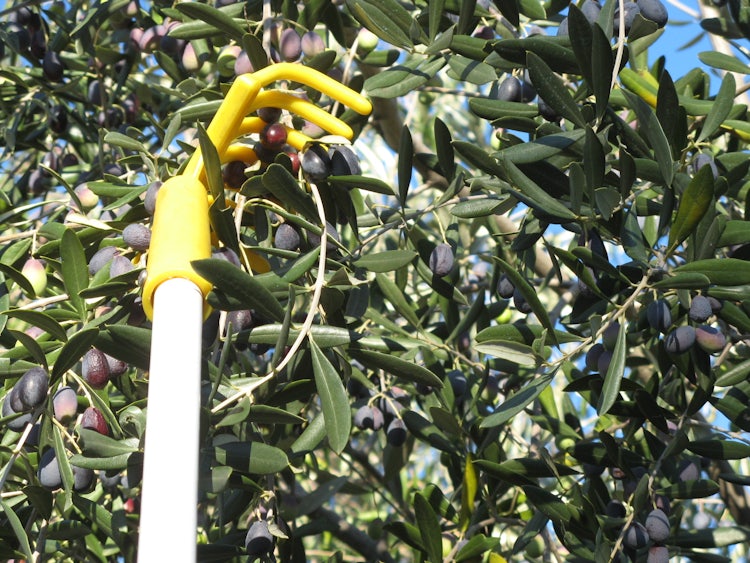
Picking olives, in my opinion, is fairly hard, physical work. The day at the farm starts early and ends after sunset.
The olive harvest can be done entirely by hand, with some special rakes, gloves or even with your bare hands.
It can be done with the use of machines, to accelerate the collection. Among these, there is a sort of mechanical arm that is placed near each olive tree, shaking the branches and making the olives fall. This obviously either requires olives to be quite mature or to shake the tree pretty hard if they aren't.
a large net is placed under each olive tree and serves to collect the small olives as they gradually fall from the plant. Once all of the olives have been collected off the tree, the net is removed and the small fruits are put in baskets or bales.
These are the most common methods for the olive harvest in Tuscany. In other Italian regions, harvesting can be different. In southern Italy, for example, it is quite common to hit the branches of the trees with sticks to knock the olives and make them fall.
At the oil-mill
Due to its agricultural vocation, Tuscany can count on the presence of many oil mills where the olives are pressed, processed and transformed into oil. The first product which is obtained from the olive processing is the precious extra virgin olive oil.
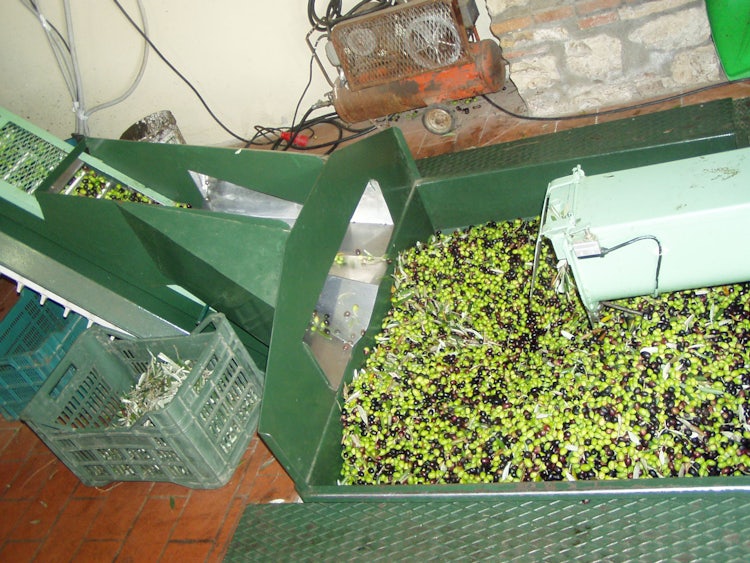
The pressing at the mill can be done on the same day of the harvest or a few days after. If they are not processed immediately, the olives are placed in a cool and well ventilated area, waiting to be taken to the oil mill.
Larger farms generally have their own private oil mill, while small producers rely on external olive presses.
There are 2 different methods to process the olives and obtain extra virgin olive oil. These are "cold” and “hot” pressings.
The traditional method to process olives is the “cold pressing”: olives are washed, leaves are removed (but not always) and everything is crushed with large millstones. The process requires several separate stages that take place all at room temperature or no higher than 18 degrees Celsius.
In "hot pressing" instead the whole process is a continuous cycle and temperatures are at around 27 degrees Celsius.

Let’s talk about prices
It is no coincidence that extra virgin olive oil is usually called "green gold" in Italy. It certainly is an optimal, healthy product (when used in moderation), but it is also quite expensive.
The cost per liter of extra virgin olive oil in Tuscany varies a great deal. Apart from the product sold through large chains of supermarkets, if you plan to buy organic extra virgin olive oil directly from the manufacturer then count on paying between 12 € - 18 € per liter.
Traditional recipes to enjoy new, just pressed olive oil at its best
We’ve arrived to the last step of our journey: the table.
Extra virgin olive oil is an essential ingredient of the Mediterranean diet and you can find it in most Italian recipes, including some desserts.
However, talking about new Tuscan extra virgin olive oil just coming out from the olive-press, there are some simple traditional recipes that allow you to enjoy it at its best. Here are two of my favorites:
Fettunta

The Tuscan “fettunta” is a slice of toasted bread topped with extra virgin olive oil. It's a dish as simple as it is perfect, the ideal method to sample the taste of the new oil.
To make a perfect fettunta you just need some good white bread (remember that Tuscan bread has no salt) and cut it into slices, then put that to toast on a hotplate or toaster oven. Once roasted, remove your slice of bread, rub some fresh garlic on one side and drizzle a good amount of your precious oil. Salt and pepper according to your taste.
Cannellini beans "al fiasco"
There are several traditional ways to boil the beans: some use the fagioliera or "fiasco" (the flask is a typical glass bottle), others a crock pot, others the pressure cooker or a normal pot (suitable for long cooking).
Put the dried cannellini beans to soak in cold water for 12 hours, then drain and rinse.
Fill your pot with water, then pour the beans. Cook for about 90 minutes over medium heat. When the water begins to boil (you will see the foam), add 2 tablespoons of olive oil and a few leaves of sage. At the end of cooking, salt to taste.
When serving, add some of your fresh olive oil and a dash of black pepper. Enjoy!

